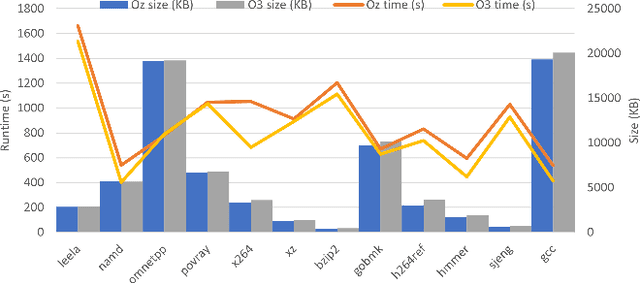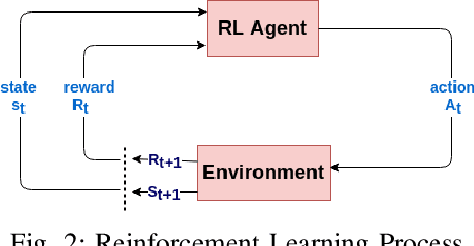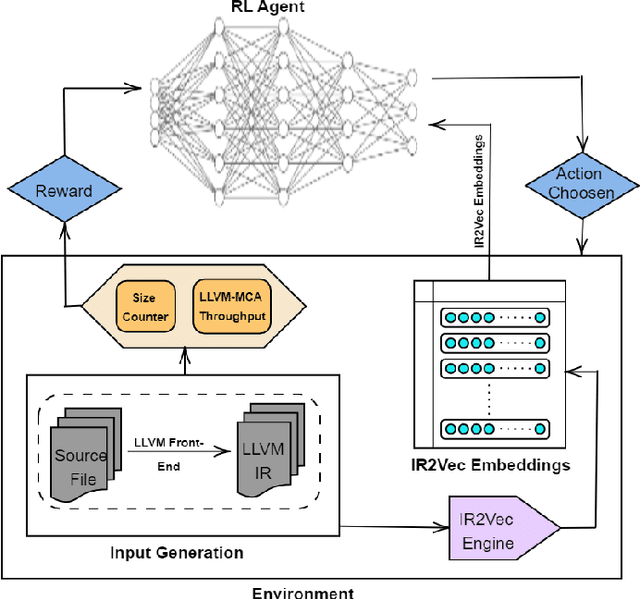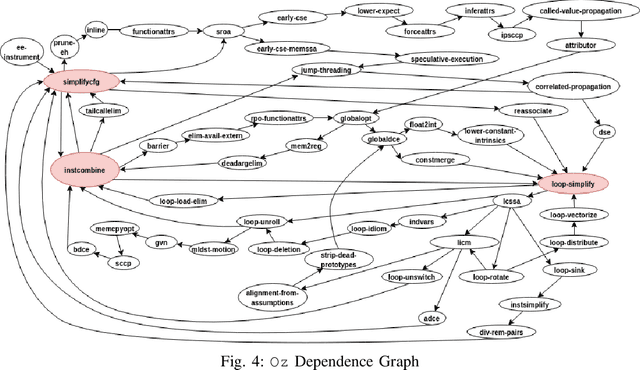POSET-RL: Phase ordering for Optimizing Size and Execution Time using Reinforcement Learning
Paper and Code
Jul 27, 2022



The ever increasing memory requirements of several applications has led to increased demands which might not be met by embedded devices. Constraining the usage of memory in such cases is of paramount importance. It is important that such code size improvements should not have a negative impact on the runtime. Improving the execution time while optimizing for code size is a non-trivial but a significant task. The ordering of standard optimization sequences in modern compilers is fixed, and are heuristically created by the compiler domain experts based on their expertise. However, this ordering is sub-optimal, and does not generalize well across all the cases. We present a reinforcement learning based solution to the phase ordering problem, where the ordering improves both the execution time and code size. We propose two different approaches to model the sequences: one by manual ordering, and other based on a graph called Oz Dependence Graph (ODG). Our approach uses minimal data as training set, and is integrated with LLVM. We show results on x86 and AArch64 architectures on the benchmarks from SPEC-CPU 2006, SPEC-CPU 2017 and MiBench. We observe that the proposed model based on ODG outperforms the current Oz sequence both in terms of size and execution time by 6.19% and 11.99% in SPEC 2017 benchmarks, on an average.
 Add to Chrome
Add to Chrome Add to Firefox
Add to Firefox Add to Edge
Add to Edge